We sailed from Key West on a Wednesday morning in 1971.
Our assignment was political in nature.
Submarine School did not prepare us for any of it.
It only lasted a week and a half.
Nothing like it may ever happen again.
I
The Commodore
The Commodore boarded us for the trip. He did not want to do it, but he had to spend 72 hours on a submarine at sea to qualify for three months worth of submarine pay. So he deigned to join us in our homey little "sewer pipe" for as long as it took.
"Submarine pay" was a euphemism for what was officially known as "hazardous duty pay." We avoided thinking about the implications of the official term. Hazardous duty pay was a bonus, amounting to the same few dollars as "flight pay" or "diving pay".
And "Commodore" was a courtesy title for a Navy Captain in command of a squadron of ships.

| + |

 
 

| = |
"Commodore" |
II
An Underwater Altitude Chamber
We were on one of the last of the operational diesel-powered submarines that were built for World War II. We needed to overhaul a Fairbanks-Morse 38-D 8-1/8, ten-cylinder main engine, but we did not have enough time before we left port. So we bought all the bearings, rings, injectors, and other parts and the engine room gang overhauled one of our main diesel engines while we were on our way to New Orleans. When the qualified Enginemen were finished with the work they were exhausted, and they all decided to get some sleep before they started the engine for its first test run.
That night on the mid-watch, while the most skilled of the engine room gang were asleep, the officer of the deck called down to the maneuvering room for a second engine to be started. We had been running only one engine, and we were falling behind schedule. The sailor on watch in the engine room was aspiring to the rating of a full Engineman. He decided to start the engine that had just been overhauled. Later we tried and failed to think of a single thing that he had done right.
He opened the fuel valve, ported compressed air to the starter, and when the engine fired, he opened the overboard exhaust valve. The engine started and immediately over-sped, before he could get to open the air intake valve. He tried to pull the throttle to idle, but the engine just revved faster. He abandoned the engine room, heading forward into the berthing compartment. He shut the watertight door behind him, and he shut the ventilation flapper valve to the engine room.
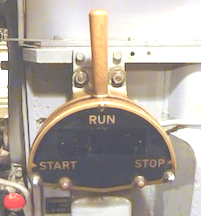
III
A Passing Encounter
In the middle of the Gulf of Mexico we met the USS Shreveport, a large amphibious ship. We were running on the surface, so we had to pull out the reference books and go through all the motions as if we were a large warship with staffs of clerical help and with a ship's laundry with starch and everything. I scanned the yardarms of the Shreveport with my binoculars, and I told the lookouts to do the same. The Shreveport was not flying any special pennants. We were flying the Commodore's burgee.

| = | Commodore |
That meant that, strangely enough, we were senior to them. Specifically, the "lineal number" assigned to our Commodore was lower than the "lineal number" assigned to their commanding officer. So they had to salute us, instead of the other way around. They had departed from the mouth of the Mississippi River, and we were approaching it. Our two ships passed perhaps a hundred yards from each other. As their bow was even with ours, their Quartermaster of the Watch blew two short blasts on a police whistle. He used the public address system on their ship, so that everyone on deck could hear him. All their sailors turned to face the port side and stood at attention. I responded by blowing two short blasts on my police whistle. The two lookouts at my elbows faced to port and stood at attention. On the bridge of the submarine there was room only for the two lookouts and for me, the Officer of the Deck. So I had to blow the whistle myself. Our quartermaster stayed below, in the conning tower, where he could not tell what was going on. One prolonged blast of their police whistle followed, and the Officer of the Deck of the Shreveport lifted his hand to the bill of his cap to salute me. I blew one blast on my whistle and I returned his hand salute. After five seconds, I blew two short blasts and dropped my salute. The Shreveport's quartermaster replied with two short blasts and his Officer of the Deck dropped his hand salute. I blew three short blasts and my lookouts relaxed and returned to their duties. Three short blasts sounded aboard the Shreveport, and their topside crewmen began moving around again, also returning to their duties. The ritual must have dated from centuries earlier. And we executed the steps involved without any other form of prior communication, except to study each other's flags.

IV
In Diving Trim
We were still two hundred miles away from the mouth of the Mississippi River when we made a trim dive. A submarine must weigh exactly as much as the sea water that it displaces while submerged, within 200 pounds, more or less. The time spent in port can result in changes in the weight and balance of the submarine. The causes are all simple, and the compensation for these changes is carefully calculated every time that a submarine sails. But a trim dive is always important to verify that the calculations were correct.
An extra sailor in the crew represents another 150 pounds of weight that must be compensated for. The cook probably bought half a ton of food while we were in port. The storekeeper bought hundreds of pounds of supplies and repair parts. We took on another torpedo, weighing a ton and a half, perhaps. We took on tens of thousands of gallons of diesel fuel, making us lighter than before.

V
The Bar Pilot
We timed our arrival at the mouth of South West Pass for the first light of dawn. The pilot boat was waiting for us with its distinctive pattern of masthead lights, one white light over one red light. Our skipper came to the bridge, and our Executive Officer (known as the "Exec") went out on the deck of the submarine along with a couple of seamen to welcome the bar pilot aboard. By the time the pilot climbed the ladders to the bridge, he was huffing with exertion. He was a charming old gentleman, surely approaching seventy years of age and retirement.
His suit was a sturdy wool relic, well-pressed, with the wide lapels of the 1930s. It was almost stylish again in the 1970s. It included a matching vest, and the color and fade patterns of the vest indicated that he never wore the suit without the vest.
It took no time at all for us to discover that the bar pilot was a raconteur. He regarded each ship as a new audience. On a submarine his audience was limited, but he gave us a full performance anyway, and we delighted in it. With the pilot, the skipper, the Exec, the Officer of the Deck (me), and the two lookouts, the bridge was overcrowded. The pilot and our skipper were both smoking pipes, and they got into an informal contest to see who could wield his pipe with more flair. And the stories! We learned about bad ships, good ships, parties, Cajuns, and characters of all kinds.
At one point the pilot said something like, "Of course, Cousin Guy (with the French pronunciation) could cook 'possum so that zero three seven we couldn't tell what it was, and it was a delightful meal."
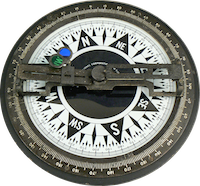
| Pilot boats at Pilot Town | |
in 1938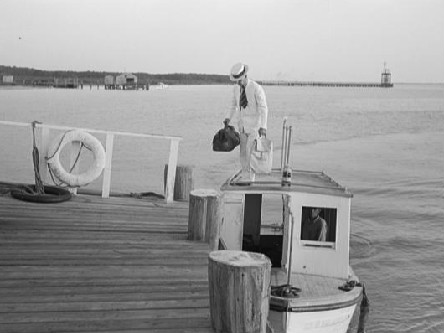 |
in 2009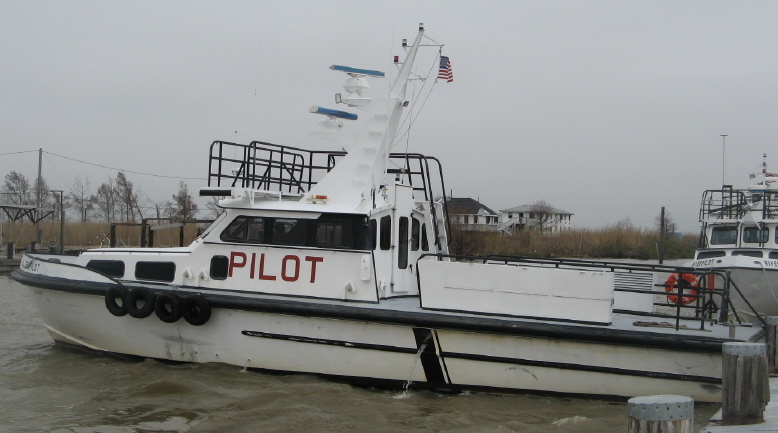 |
| We were there in 1971, so split the difference. | |
VI
Head of Passes
The bar pilot timed his last story to end as we arrived at the head of the passes through the Mississippi River Delta. The wide, deep, swift river ends many miles from the open waters of the Gulf of Mexico. There are a number of passes through which a ship can travel to get from the river to the gulf. They all converge at the same point, and there was a large building there called Pilot Town.
At Pilot Town we discharged our bar pilot and we picked up a river pilot. This new pilot's jurisdiction ran from the head of passes to Baton Rouge. The pilots stayed in what they described as a dormitory, the only building at Pilot Town. There were no roads here. The only way to travel was by boat. I gathered that lots of poker is played at Pilot Town, and that lots of stories are told.
As we approached Pilot Town, our Exec went below with the bar pilot to do the paperwork necessary for the pilot to get paid. That left the skipper and me on the bridge, with the lookouts. A moment after the Exec was below decks, the port lookout pointed at a small boat that was approaching us and said to me, "That boat is flying an admiral's flag."

| = | Admiral |
Sure enough, there was a blue flag with two white stars flying from the yardarm of the small boat. The skipper went out on deck to meet the Admiral, who turned out to be the Commandant of the Naval District, who was arriving unannounced. That left just me on the bridge, with the two lookouts. Do you see what's happening here? When we were in the open sea, with plenty of room for evasive maneuvers with the boat, and therefore lots of decisions to be made, I stood watch alone as Officer of the Deck. The lookouts were very young sailors who were trained to operate and maintain electronics equipment. They had no preparation for handling a ship, so they simply reported facts to me, and I made all my own decisions. Then we got into a long narrow pass, where there were no decisions to make. The only thing to do was to keep right and follow the ship in front of you. And there was a bar pilot to provide all the advice needed. At that point the skipper and the Exec arrived on the bridge to observe and "assist", and the navigator went to the conning tower to monitor things, and to distract me with advice over the loudspeaker. In other words, if there was nothing to go wrong, the senior officers wanted the glory of overseeing the process. Then, when we got to the Head of Passes, where all the shipping for the Mississippi River converges and diverges through different openings, these "helpers" abandoned me. I had no room to maneuver, but lots of maneuvering to do. Picture yourself at a five-way intersection with no traffic lights or stop signs, and everybody else is driving a large truck with no brakes, and all you have is your VW Microbus with no brakes and a couple of kids saying "Watch out!" The skipper welcomed the Admiral aboard, and the two of them went below to talk with our Commodore. Then, finally, the pilot boat arrived. We swapped the bar pilot for the river pilot, and the Exec came to the bridge with the river pilot. I ordered all engines ahead full, and we moseyed away from that intersection as fast as a submarine on the surface can chug along. A few minutes later the skipper came back to the bridge, and I again had all the help that I could stand. Of course, there were no longer any difficult decisions to make.
VII
Diving Afresh
A couple of hours later we approached a point where the river was charted as 160 feet deep. We were aiming for that point to make another trim dive in fresh water.
A submerged submarine displaces a given amount of water, by volume. The oceans are fairly consistent in the density of the sea water near the surface. But fresh water is perhaps two-and-a-half per cent less dense than sea water. So our submarine could find itself 45 tons (more or less) too heavy upon submerging in the river. Since it was our plan to submerge in the river farther upstream for a publicity stunt, we made a trim dive ahead of time when no one was watching us. First, though, we pumped a carefully calculated amount of water out of our variable ballast tanks to achieve what we hoped would be the right mass, or weight, for the boat.
VIII
Moored
We were assigned to tie up at the Jax Brewery. I'm not kidding, there was a beer tasting room between the submarine and dry land. The brewery was still in business in those days. Our berth was just a block from Jackson Square in the French Quarter of New Orleans. There were hundreds of civilians standing, sitting, and lying on the levee to watch us tie up to the wharf. They were in a mood for a party. It was late on a Friday afternoon, four days before Mardi Gras.
Some civilian tugboats were sent to help us tie up to the wharf. The river curves sharply at that point, and the eddy currents coming from under the wharf were fierce. As the tugboats approached, the skipper, the Exec, and I all noticed that they were the wrong design for submarines. If we were to allow those particular tugboats to push us, they would cut open the "soft" tanks on the sides of our hull and sink us. We would then dump tens of thousands of gallons of diesel fuel into the river to mark our mass grave.
We sent the tugs away, and we maneuvered to attempt the landing unassisted. Things got tense on the bridge.
First, I made a pass at the wharf. The skipper had selected me for this maneuvering watch because he considered me to be the best shiphandler among his junior officers. This time, I missed the wharf horribly. The skipper clenched his teeth on his pipe stem as he growled, "Number Two, take over!"
The skipper was clearly displeased. I yelled down the voice tube, "In the quartermaster's notebook, the Executive Officer has the Conn, Mr. Charlton still has the Deck."
The Exec maneuvered the boat upriver, turned around, passed the wharf, turned around again, and made another approach to our assigned berth. The Exec had learned from observing my mistakes, and he came a lot closer to success than I had managed. But he was not close enough. At the last minute the current pushed us away from the wharf again.
The skipper was dangerously silent. His jaw muscles were tighter than I had ever seen them. His stare would have melted through lead. The pilot insisted that he could get us alongside the wharf, so the skipper let the pilot make the third approach.
IX
The Honorable
Felix Edward Hébert
Chairman
Committee on Armed Services
On the Monday following our arrival, the day before Mardi Gras, we got underway at 1:00 p.m. with the local congressman, his cronies, and lots of reporters aboard. The Coast Guard stopped all traffic on the river in downtown New Orleans. Helicopters flew overhead with television news cameras, in the days before that was commonly done. We went out into the middle of the river, and we submerged. The dignitaries and other civilians all looked through one of the periscopes. It was a weird and wonderful time.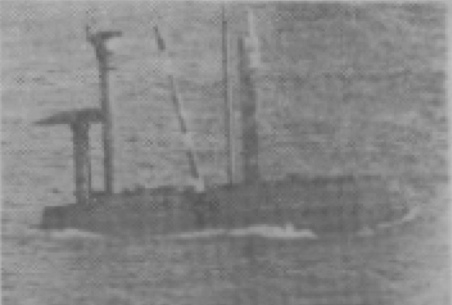
X
Cinderella Liberty
The entire crew was required to be back aboard at midnight on Tuesday. On the morning of Ash Wednesday, we all got up nursing our hangovers. Another river pilot came aboard, and we sailed for home.

